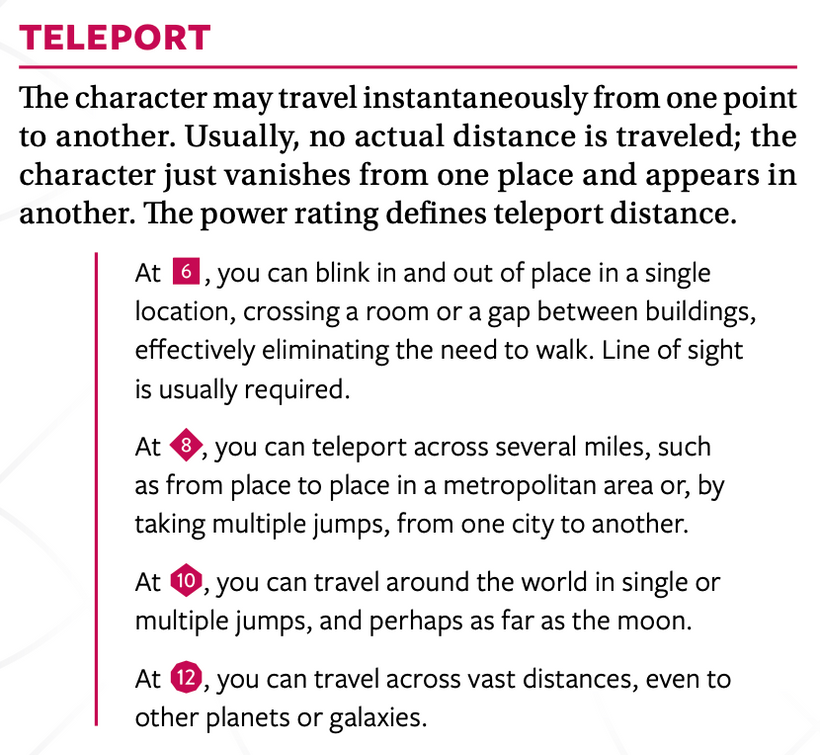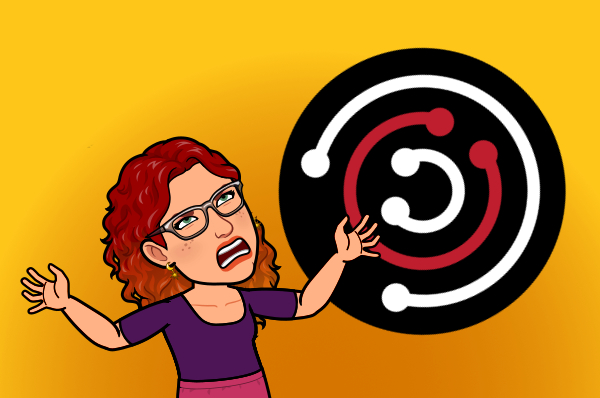In the Cortex Game Handbook, each Power is listed with its die ratings listed, showing essentially what you get for each die level. It looks like… well, honestly, it looks like just about every other RPG in the world that has rated powers, but specifically it looks like this:

This is a great example of a double-edged sword in publishing games, because there’s a lot of good reasons to include this sort of stuff. These listings also can become obstacles that trip up players.
The Good Stuff: first of all, this is nice and juicy descriptive text that can get players excited about playing, and that’s always a good thing to include in a game text. For new players, too, this demonstrates the range of possibility for each option in the game—a little tidbit that experienced players often forget.
The Bad Stuff: these very nice lists aren’t just hooks to engage player interest, but can also be hooks for players to get tangled up in. Players can get confused or even upset when their Flight d12 doesn’t get them to the finish line before somebody else’s Flight d8. They might expect their Ice Control d8 to be able to capture anybody in any room because they can “snap-freeze the air in the room.”
I could keep itemizing reasons why these descriptions turn bad, but they all boil down to the same thing. This isn’t how Cortex mechanics work. Cortex is a game with hardly any static thresholds, and it defines things, not in terms of material effect (“several miles”) but in narrative weight.
These listings always remind me of Stan Lee answering the perennial question, “Who would win in a fight between…?” If you haven’t seen it, watch it real quick over on TikTok. The point is: who’s stronger, faster, better trained, or better armed—in Cortex terms, their die ratings—these are not the things that determine the outcome.
Stan has a simple answer for writing comics, and there’s a simple answer when playing Cortex, too. The dice determine who wins. Now, your really impressive die rating in a power mean you have a better die in the die pool, but it doesn’t mean you’re always going to win any roll for a situation that sort of matches the die rating description.
And this is because Cortex cares about context—you know, the stuff that stories are made out of. How strong you are, how fast you are, how powerful your eyebeam lasers are: all of these are one element among many that determine your chances of success. By themselves, they’re just stats on a character sheet. Combined with a specific scene, a specific antagonist, a backstory, a character arc, and any number of other elements, you get a Cortex die pool and a piece of a story.
So should these die rating breakdowns be included in the book? Probably; I trust Cam’s instincts (and the writing rather quietly avoids most hard thresholds and absolute statements) and the good—engagement! guide rails! inspiration!—outweighs the bad. Let’s just say the the Handbook has Die Rating Descriptions as a distinction that’s usually rolled as a d8, but occasionally hindered at d4.
